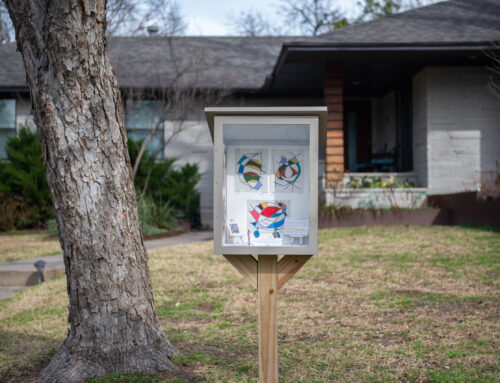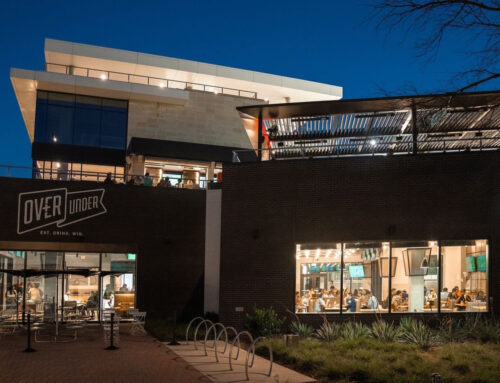A controlled-development proposal is weaving its way through city government, leaving plenty of controversy in its wake
Neighborhood Stabilization Overlay District.
It may sound like just another boring zoning designation. But the mere mention of the proposed teardown ordinance strikes fear into the hearts of homebuilders and real estate agents specializing in the practice, while at the same time giving hope to homeowners who want to protect their neighborhoods from becoming zero-lot-line suburbs-in-the-city.
The ordinance has been making its way through the Zoning Ordinance Advisory Committee since early June and already has generated much interest and controversy there — even prompting the committee chairman, real estate agent Carol Scott, to recuse herself from the debate because of her financial interest in its outcome.
The Single Family Housing Task Force, a group of industry representatives and homeowners put together by the City Plan Commission, proposed the ordinance as a way to deal with the teardown trend sweeping Dallas. According to the task force’s proposal, “the ordinance establishes residential overlays to preserve the existing character of single-family neighborhoods by imposing alternative yard, lot and space regulations to ensure that new construction is compatible with existing structures.”
Janet Tharp is the interim assistant director of long-range planning for the City of Dallas. She says the overlay was designed with both homeowners and homebuilders in mind.
“It’s a way for neighborhoods to exercise some control with the least amount of restrictions on new development,” Tharp says.
It’s easier to get and less restrictive than a Historic or Conservation District, and it provides immediate relief to neighborhoods able to get a majority (50 percent plus 1) of its homeowners to sign the petition. The overlay is available to entire neighborhoods as well as a single block face. Unlike a Conservation District, it’s not intended to regulate architectural style or building materials, but instead will regulate the “bones” of a neighborhood through the scale and placement of homes on a lot.
There are two parts to the Neighborhood Stabilization Overlay District. Once the petition has been certified by the city, a Prevailing Standards Overlay goes into effect for one year with the option of a six-month extension. This interim overlay governs development in the neighborhoods until the permanent standards of the stabilization overlay are set.
The prevailing standards restrict height, garage placement, paving surface, and setbacks to within 10 percent of the predominant structures in the area.
The stabilization overlay places more specific restrictions on the above categories. For example, the height of new structures in a given overlay might be capped at 24 feet. Garages might be required to be rear-entry and attached to the house. Setbacks could be set at a specific distance as well.
Such restrictions concern Michael Campbell, a Lakewood resident and Realtor who owns Spirit River Homes and manages the Keller Williams real estate office at Mockingbird Station.
“The revitalization of older neighborhoods, especially areas like East Dallas, Oak Lawn and, to a certain extent, the Park Cities, has been going on for 25-30 years,” he says.
“My real concern is that (the overlay) will create such an air of uncertainty in our neighborhoods that the builders will just go away. Uncertainty is not a friend of development. It’s a huge economic gamble anyway to do spec building, but to put a whole ‘nother layer of uncertainty on top of that — it just dries it up. That’s my huge concern.”
But Ken Lampton, a Lakewood resident and RE/MAX real estate agent specializing in the Lakewood, M-Streets, and Lower Greenville area, disagrees with Campbell’s assessment. He says homebuilders and real estate agents specializing in residential teardowns have painted themselves into a corner by creating miniature real estate bubbles in the neighborhoods they target. Now they must build bigger and bigger houses to maintain the same profit margins, creating the need for the stabilization overlay.
“Like a shark, they have to keep swimming forward in the water to breath,” he says. “People don’t realize how fast this gains steam. Every six months, the prices go up, so more and more builders move in. It spirals until it explodes and crashes. I’m not saying it will anytime soon. I’m just worried about what happens when the process finally gets disturbed by high interest rates, or whatever. We could end up with a bunch of empty lots or empty houses.”
Another area of concern for Lampton is the pressure on residents with fixed incomes. When property values rise, so do property taxes, resulting in long-time residents getting priced out of their own houses, even though they have paid off their mortgages.
“These older homeowners start looking for builders to sell to,” Lampton says. “Appraisers accidentally become the allies of builders by bringing these houses on the market for builders to buy.”
But the rising property tax argument cuts both ways, says Paul Urruti, director of government affairs for MetroTex Association of Realtors, which represents 11,000 Realtors in the greater Dallas area.
“Dallas is in a budget crunch. We should not prohibit or slow down growth. The city is going to need the increase in tax revenue this new development will bring. If property-tax revenue is not what is anticipated, the city could adjust the property-tax rate. Then people citywide will be affected, and the burden will fall on homeowners.”
The wider economic implications of the ordinance will be on the minds of committee and council members as they debate the specifics of the overlay.
Discussions in ZOAC centered around the threshold of 50 percent plus 1 to initiate the overlay, the waiting period during which the Prevailing Standards Overlay is in effect, and the single block face as the minimum expression of the Neighborhood Stabilization Overlay — sticking points that will likely guide debate in the Plan Commission, and, ultimately, the City Council.





